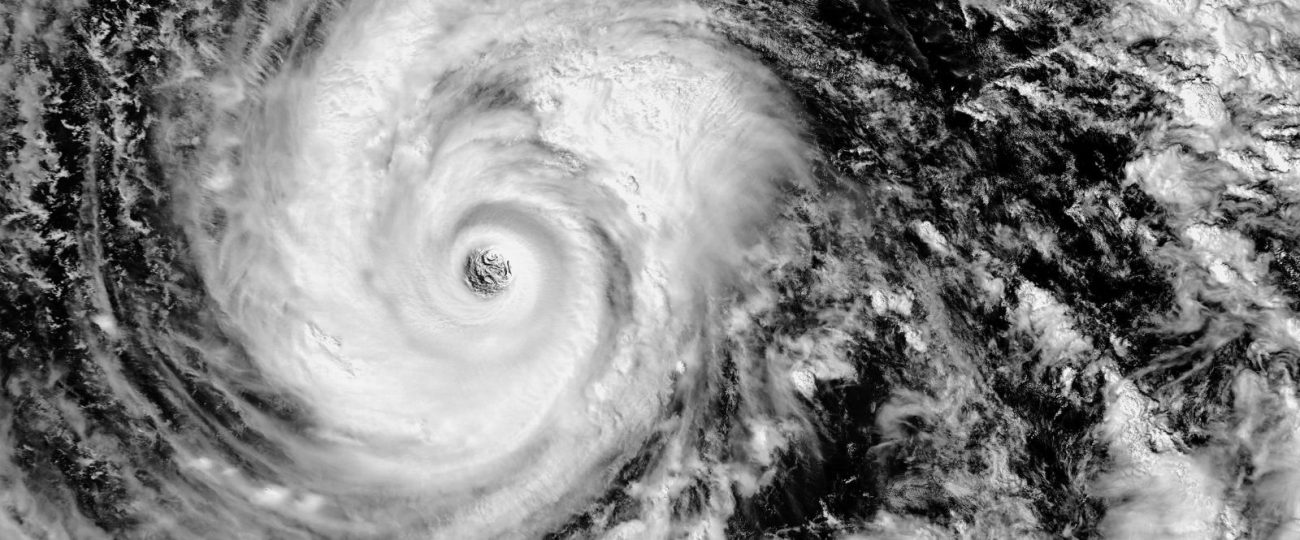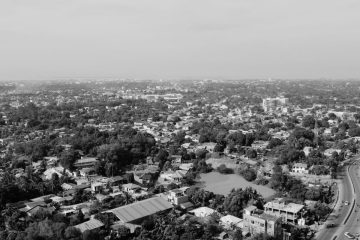What Happened On September 26th?
On September 26, 1959, Typhoon Vera struck Japan with winds exceeding 160 miles per hour. The storm made landfall near Shionomisaki, southern Honshu, and leveled homes and tore apart infrastructure. It uprooted trees, toppled buildings, and sent debris flying across towns. Families scrambled to find shelter, though the relentless winds made safety elusive.
The storm surge in Ise Bay breached hastily constructed levees, sending seawater rushing into low-lying regions. Floodwaters engulfed Nagoya within hours, submerging streets and factories alike. Rising waters swept away cars and scattered debris throughout the industrial city. Factories, central to Japan’s post-war recovery, halted production as floodwaters swamped machinery. Workers tried to salvage equipment, but the surging waters forced many to evacuate before they could do much. Nagoya’s industrial heart would face a long recovery, with steel and automotive sectors among the hardest hit.
Further inland, torrential rains triggered landslides that buried entire villages in Gifu Prefecture. Days of heavy rainfall had already saturated the ground, and the storm sent mountainsides cascading onto homes. In some areas, families had no time to escape, and entire villages vanished under tons of mud. The landslides destroyed not only homes but also rice paddies that local farmers had cultivated for generations. The loss of these fields severely impacted the food supply, compounding the devastation left by the storm.
As the storm surged into Ise Bay, levees meant to protect the surrounding towns collapsed. Seawater flooded areas like Kuwana within hours, submerging homes and trapping residents. Those who could escape sought refuge on rooftops, hoping for rescue that often arrived too late. In Kuwana, the floodwaters covered entire neighborhoods, leaving survivors isolated for days. The levees, many of which had been poorly reinforced after previous storms, failed to withstand Typhoon Vera’s onslaught.
Nagoya, a key hub for Japan’s industrial sector, suffered immense damage as floodwaters overtook factories and railways. Workers in crucial factories producing steel and automotive parts saw their efforts to save machinery thwarted as the water levels rose too quickly. Railways, vital to the city’s industrial output, were washed away, cutting off supply lines to the rest of Japan. With transportation and factories crippled, Nagoya faced severe delays in recovery, leaving the city’s economy in a fragile state.
Typhoon Vera continued its destructive path inland, triggering catastrophic landslides in Gifu Prefecture. The rain-soaked mountains, already vulnerable, gave way, burying entire villages under mud and debris. Hillsides collapsed with little warning, and in many cases, residents had no time to escape. Homes, built over generations, disappeared under the landslides. Farmers, who had relied on their rice paddies and crops for survival, saw their livelihoods buried in a matter of moments. The damage to the farmland made the recovery even more difficult, as the destruction of rice paddies added long-term consequences to the immediate loss of life and homes.
The isolation of many rural areas worsened the situation. Roads, destroyed by flooding and landslides, left entire communities cut off from outside aid. Communication lines fell, leaving survivors without a way to call for help. For days, people in the hardest-hit areas survived on what little food and water they had, unsure when help would come. The destruction of the roads and the vast scale of the damage hampered rescue efforts, leaving many areas inaccessible for extended periods.
Rebuilding the fishing industry presented enormous challenges. Many fishermen had lost not only their boats but also the means to start over. The fleets that had sustained these coastal communities for generations had been destroyed. Without the necessary resources to rebuild, the future for many families seemed uncertain. The economic loss, combined with the emotional toll of lives lost, left these coastal villages devastated for years to come.
Typhoon Vera crippled Japan’s transportation network, bringing recovery efforts to a standstill. Railways, crucial to moving supplies and people across the country, suffered extensive damage as floodwaters washed away tracks and bridges. In Nagoya and surrounding areas, train services halted entirely, preventing essential goods and emergency aid from reaching those in need. The destruction of key transportation links added to the challenges of distributing relief, making it harder to get food, medical supplies, and equipment to the hardest-hit regions.
The storm also knocked out power across vast areas of Japan. Power lines snapped under the force of the winds, plunging millions of homes into darkness. Hospitals, already overwhelmed by the number of injured, struggled to operate on backup generators that barely sustained critical equipment. In smaller, rural clinics, the situation became dire as power outages left medical staff unable to treat patients effectively. The blackout extended for days in some areas, complicating rescue efforts and worsening the situation for survivors who had no access to electricity, clean water, or reliable communication.





